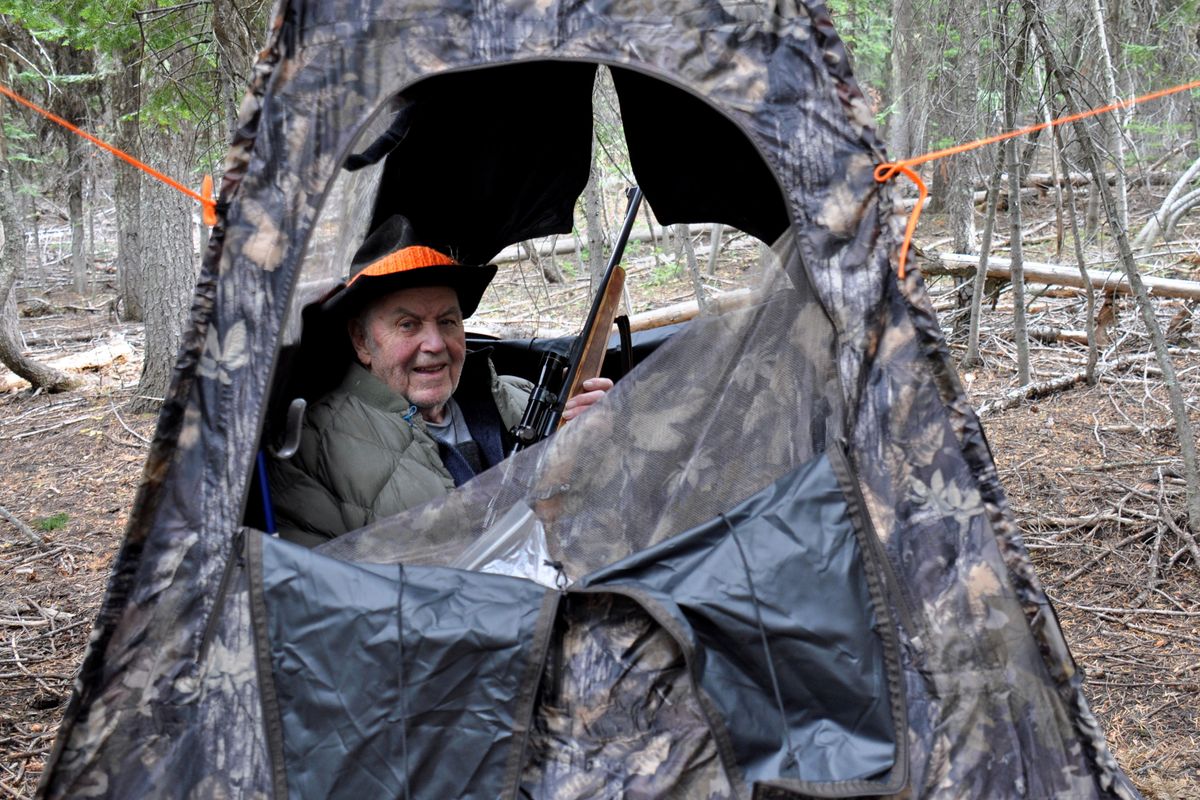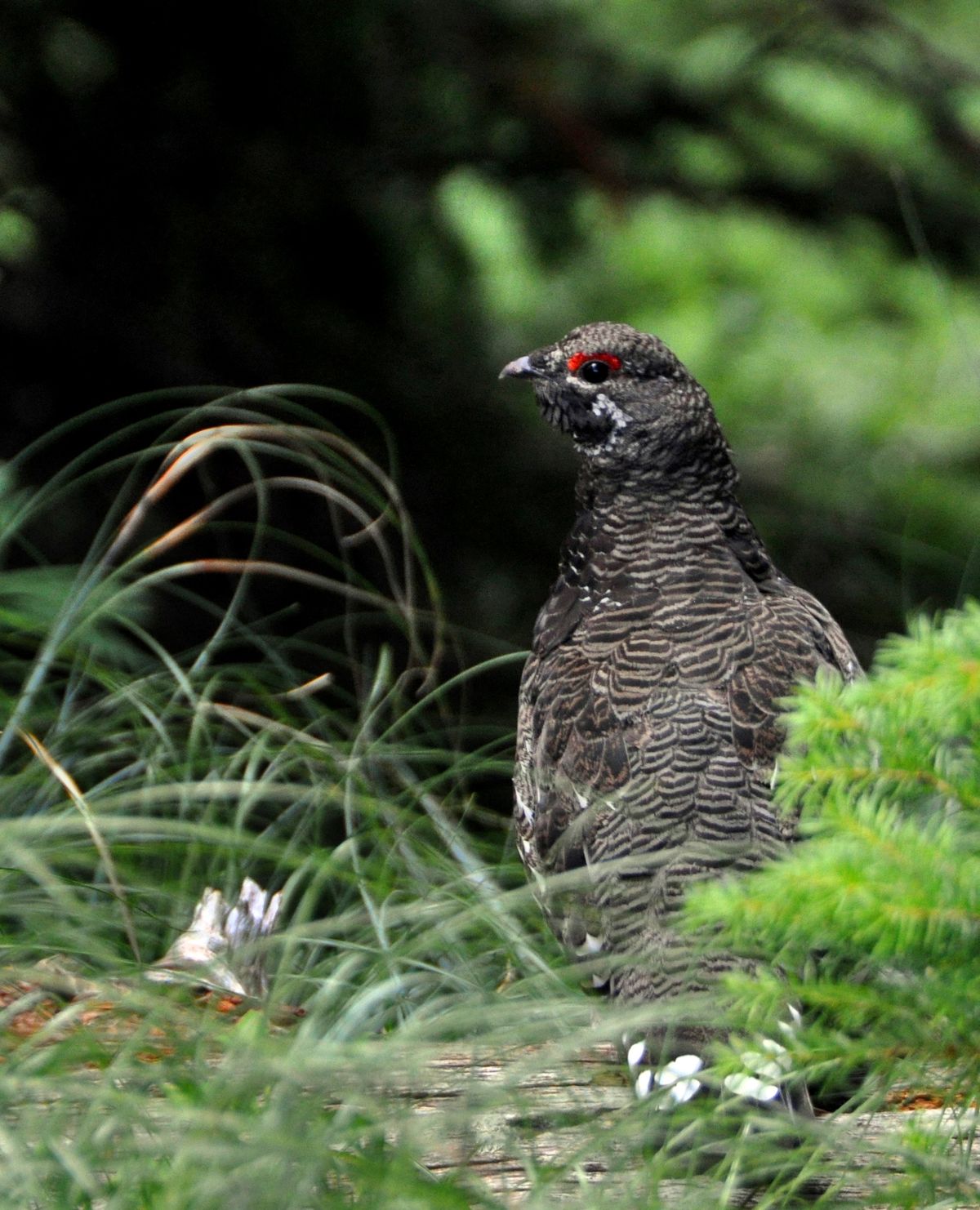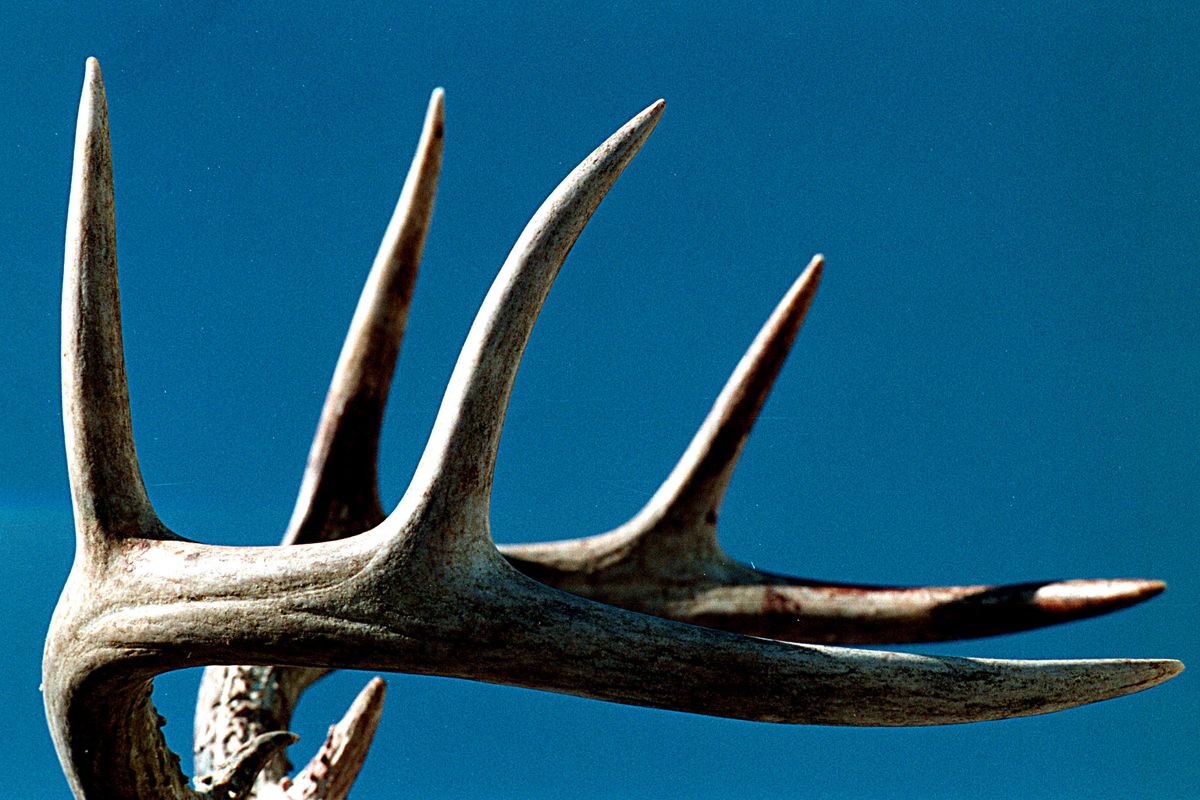Rich Landers: No such thing as unanimous approval of hunting regulations
Proposals call for starting forest grouse seasons later in September with reduced limits. (Rich Landers)Buy a print of this photo
Should baiting be allowed for big-game hunting? When should the pheasant season open? Is it time to end the four-point minimum restriction for whitetail bucks in two northeastern Washington units?
These are some of the controversial issues Washington wildlife managers are exploring before regulations are set for the 2015-2017 hunting seasons.
Sportsmen have until Monday to comment on the Department of Fish and Wildlife website.
Anyone who kept his opinions to himself long enough to listen for an hour or so at the August public meeting in Spokane would have learned at least one thing: Virtually no hunting proposal is going to win unanimous approval in a public forum.
But hunters who participate in the rule-setting process will help make the decisions.
Roughly 4,000 “issues” were brought up by the public at the start of the rule-making process earlier this year. Here are a few of the hottest current topics.
Baiting: Some big-game hunters would never consider sitting over a pile of grain, apples or other bait to fill their tags. Others don’t know how to hunt any other way.
Washington, Oregon and Utah are the only Western states that allow bait to be used for hunting deer and elk.
Outfitters in particular like the convenience of using bait to lure deer into shooting distance of clients in blinds. Some hunters argue that baiting gives them a better chance at a positive ID on the animal and a clear shot for a quick kill.
But the arguments against baiting are compelling even beyond the ethical considerations of fair chase.
Baiting can congregate wildlife and increase the chances of transmitting contagious diseases, such as EHD, that can kill hundreds of animals in a short period.
Bait can lure animals into other dangers or trouble as they cross roads or cause damage on neighboring land.
Washington hunters have noted that baiting is illegal in the state for hunting waterfowl and game birds. In addition, voters approved a 1995 initiative that banned the use of bait for bear hunting.
“The public would not approve the use of bait for deer hunting if somebody decides to make an issue of it,” said one hunter at the Spokane meeting. He’s probably right.
Overall comments at the meeting ranged from baiting being “no problem” to a “big problem.”
Baiting for deer and elk is prohibited in Alaska, Arizona, California, Colorado, Idaho, Montana, Nevada, New Mexico and Wyoming.
Maybe it’s time to join the crowd.
Lead ammunition: Lead is toxic. Federal regulators have been weeding it out of everything from gasoline to paint. More recently, wildlife managers have been following suit and even shooters and fishermen who handle lead are being more careful.
Wildlife biologists documented birds such as bald and golden eagles that have died after ingesting bullet fragments from the meat of wounding-loss game as well as swans that ingest spent lead shot from wetlands.
Since 1991, nontoxic shot already has been required across the country by the U.S. Fish and Wildlife Service for hunting waterfowl.
Washington has banned lead shot for hunting at state pheasant release sites since 2011. Some federal areas, such as the Columbia National Wildlife Refuge near Othello, also have banned lead shot for upland bird hunting.
California is phasing out the use of lead bullets for big-game hunting after research indicated that condors had died after ingesting lead from wounded game. Nontoxic substitutes for lead bullets are more expensive than lead but just as accurate and effective, according to hunters who have tried them.
Washington wildlife managers are presenting options that clearly angle toward an eventual goal of getting the lead out of hunting.
Permit drawings-bonus points: A hunter who does not draw a tag in a special big-game hunt drawing is awarded a point for a higher probability of drawing a tag the next year.
As a consolation prize, he gets to put his name in the hat extra times each year until he scores a permit.
Points are squared in the drawings. That is, a hunter who has applied unsuccessfully twice would have two points going into the next drawing, which translates into four names in the hat when the computer randomly selects permit winners from the thousands of applicants.
A hunter who applies unsuccessfully 10 times would accumulate 10 points and have his name in the hat 100 times for the next drawing.
Thus, a hunter with 10 points has 25 times the probability of drawing a tag than a hunter with two points.
But a hunter with no points can still luck out and draw a tag while a hunter with 20 points gets the crying towel.
Wildlife managers are listening to suggestions, including making successful hunters wait a year before they can reapply for a big-game permit. Proposals getting the most support would somehow increase the chances of hunters with 12 or more points.
Antler restrictions: In mule deer areas, some hunters argue that three-point minimum restrictions have resulted in a bounty of two-point super bucks and little else. Should some permits be offered for two-pointers?
In northeastern Washington whitetail country, many hunters are saying the four-point minimum experiment enacted in 2011 in Units 117 and 121 has not yielded significant improvements in deer numbers and should be removed.
The northeastern Washington sportsmen who demanded this restrictive rule in two of the most productive whitetail units in the state are having a hard time defending it three years later.
Meanwhile, business owners in the region say the rule has resulted in fewer hunters and less money spent in Stevens and Pend Oreille counties.
Verifying that a whitetail has four points on at least one antler often is tough, especially if the hunter is a kid or novice.
“You see very few family hunting camps during the season now,” one hunter at the Spokane meeting said.
Pheasant seasons: Some hunters don’t like the 2004 change to open the general pheasant season a week after deer season. Apparently they were not at the meetings in 2003, when several good cases were made for a later opening, such as:
• Young roosters are more fully feathered and distinguishable from hens.
• Farmers tend to prefer a later opening so pheasant hunters don’t conflict with their traditions of having friends and family on their land for the opening of deer season.
Another proposal calls for extending pheasant season through the Martin Luther King weekend in January rather than sticking firmly to a 12-week season that closes a week prior to the holiday.
Some hunters don’t want to see the season extended because pheasant populations have declined over the past 40 years.
Wildlife managers say the few pheasants taken in an extra week of winter hunting likely would not impact the overall population.
Early elk hunts: Bowhunters are asking the state to start their seasons later in September so the weather is cooler and extend the hunt longer so it coincides with the heat of the rut, so they have a better chance to call in trophy bulls.
Rifle hunters tend to think bowhunters already have the enviable advantage of being able to hunt elk during the rut and should be satisfied with what they have.
Muzzleloaders are asking for more units open to elk hunting in their early hunt, which starts the first week of October.
State wildlife managers have to balance these requests with the potential outcomes and pressure on herds as well as on hunter crowding.
Forest grouse limits: Numbers of dusky, spruce and ruffed grouse seem to be declining. Proposals, backed by limited science, suggest that it’s time to back of the four-bird daily limit and perhaps open the season later so hunters don’t take such a large percentage of females and young grouse of the year.
Contact Rich Landers at (509) 459-5508 or email richl@spokesman.com.



